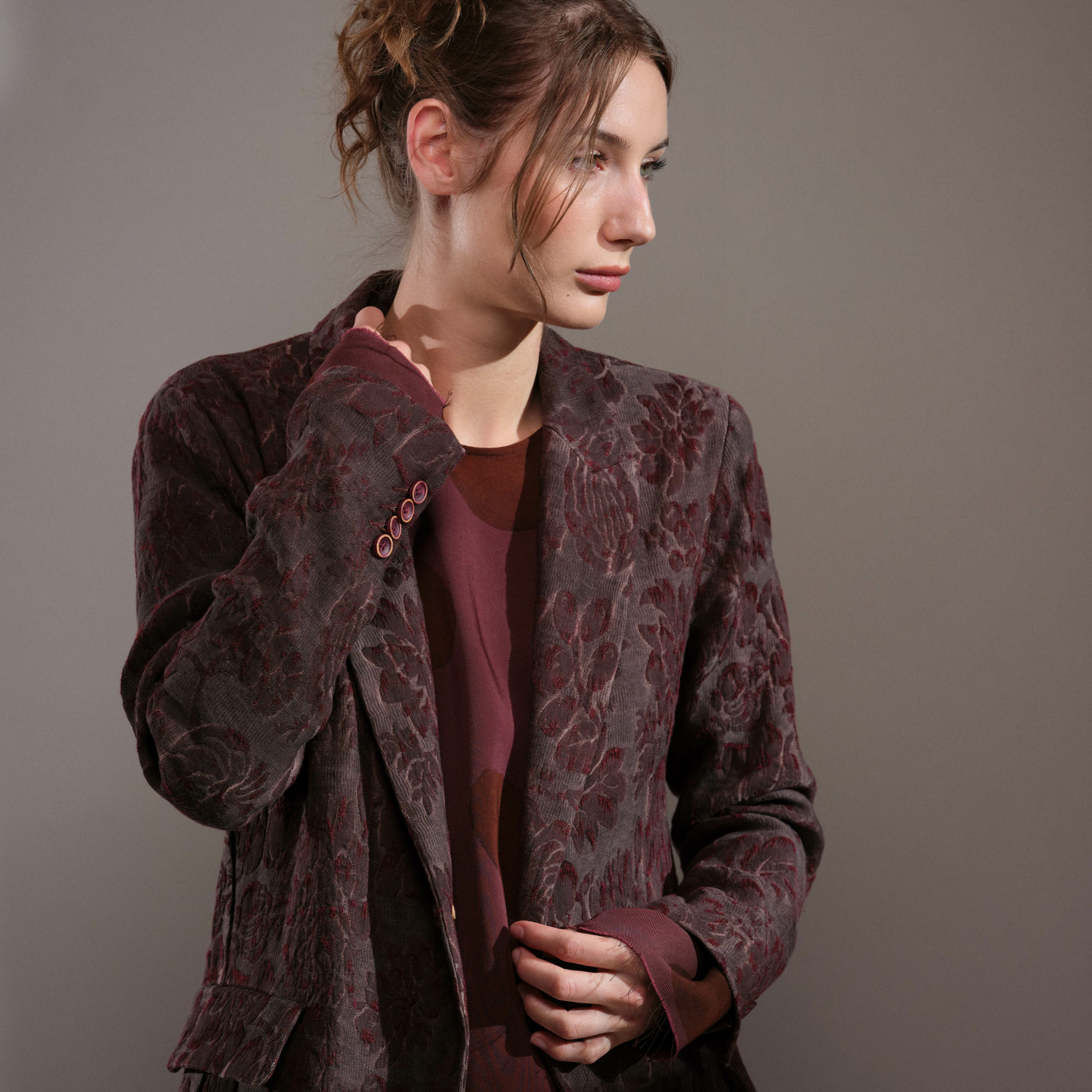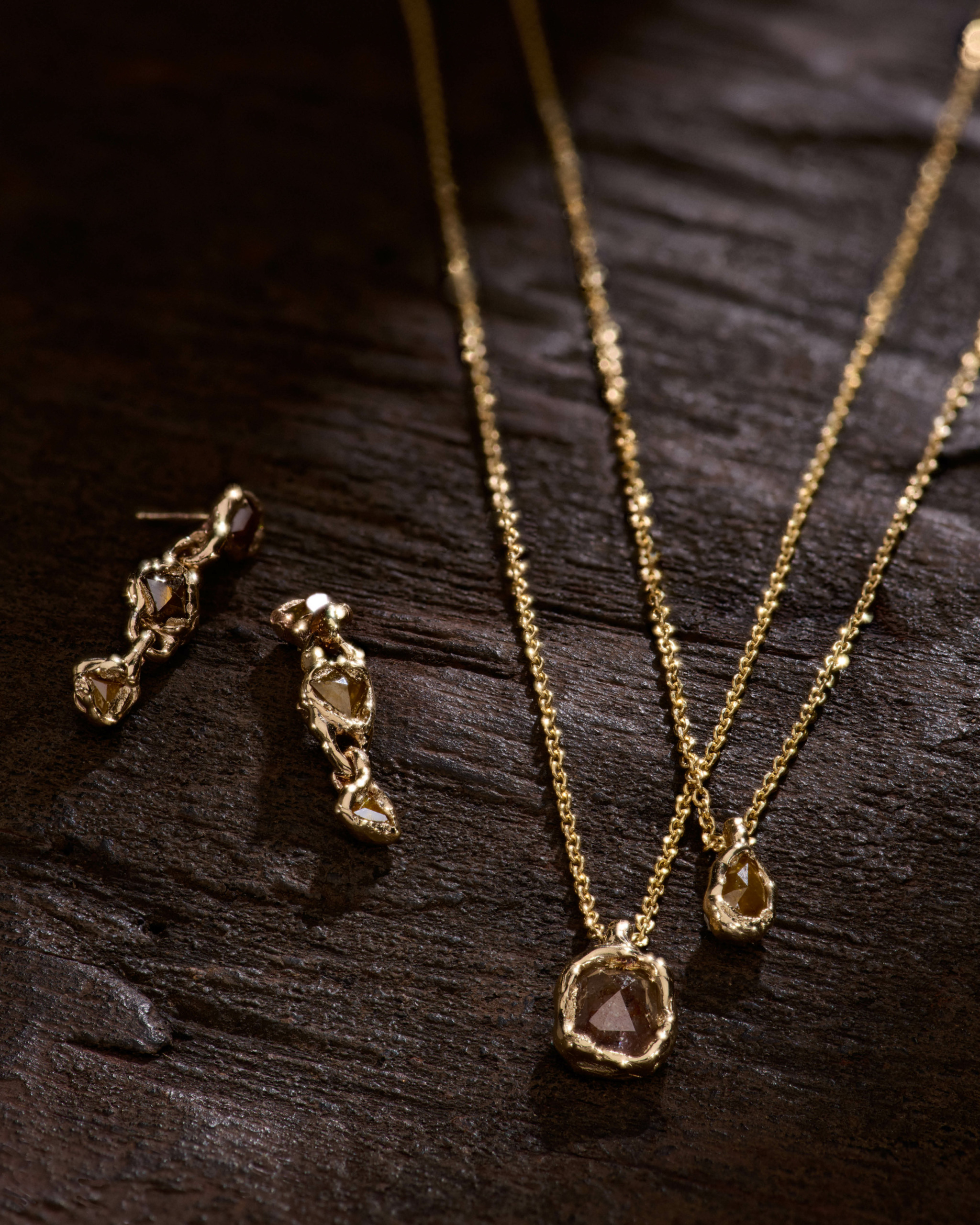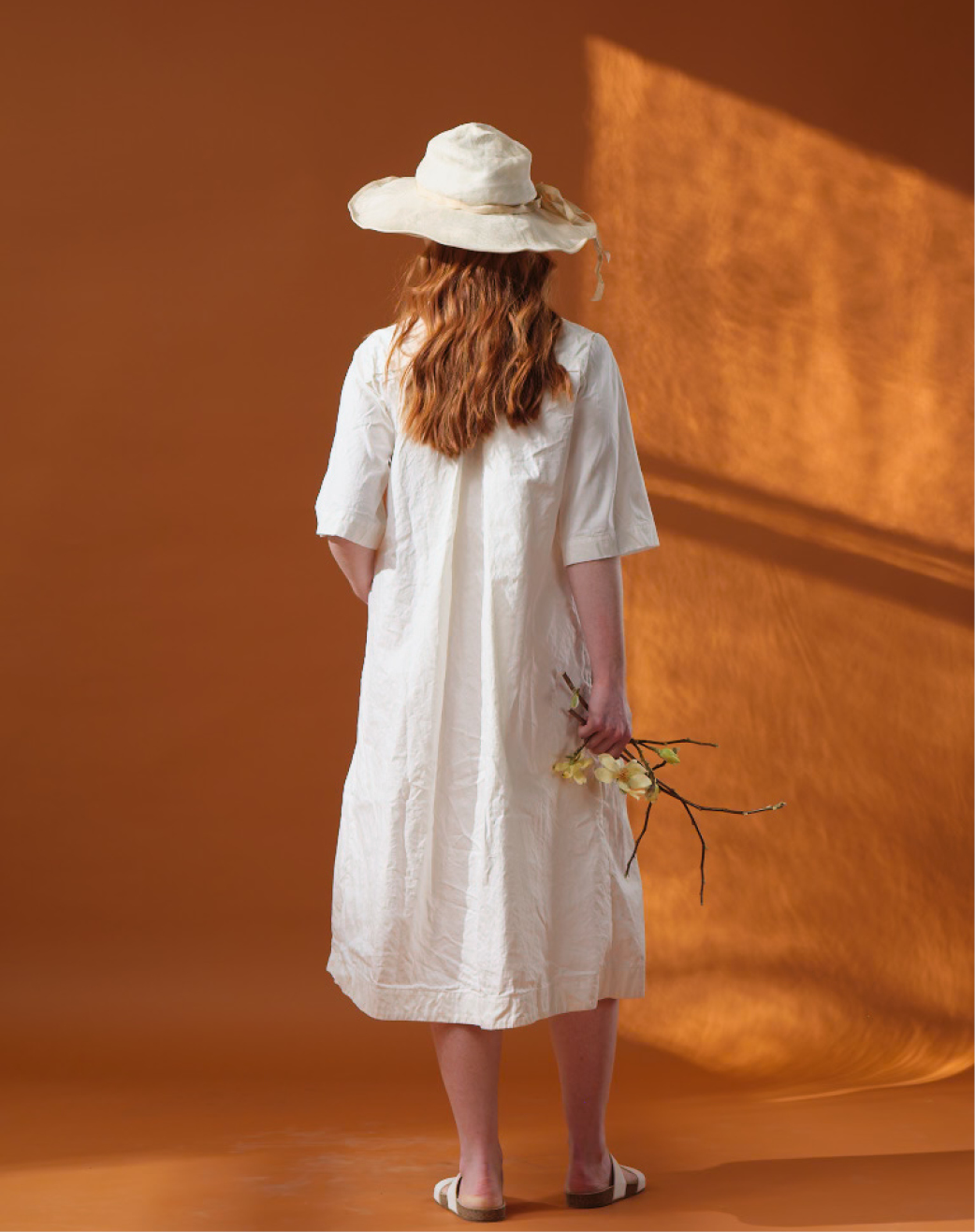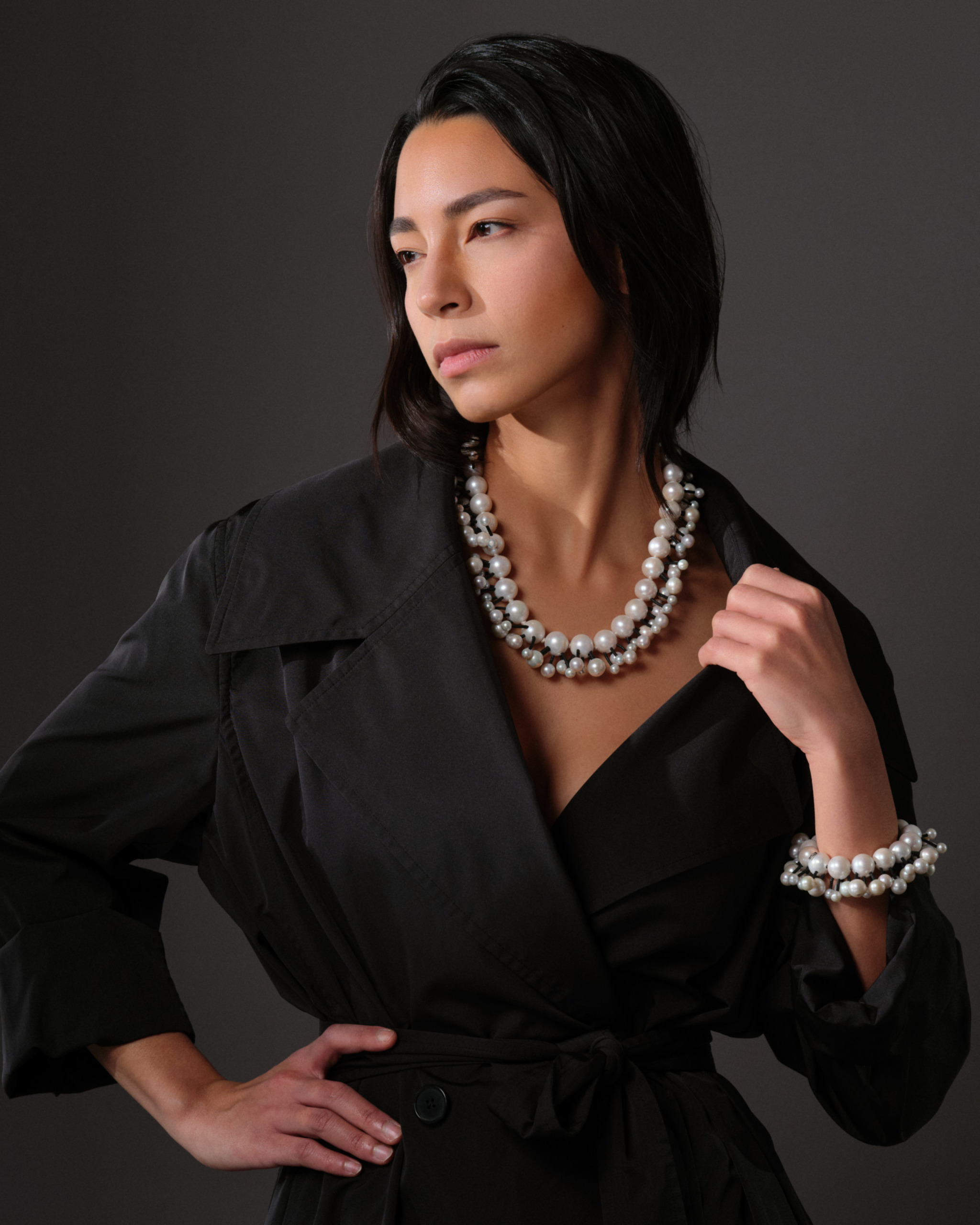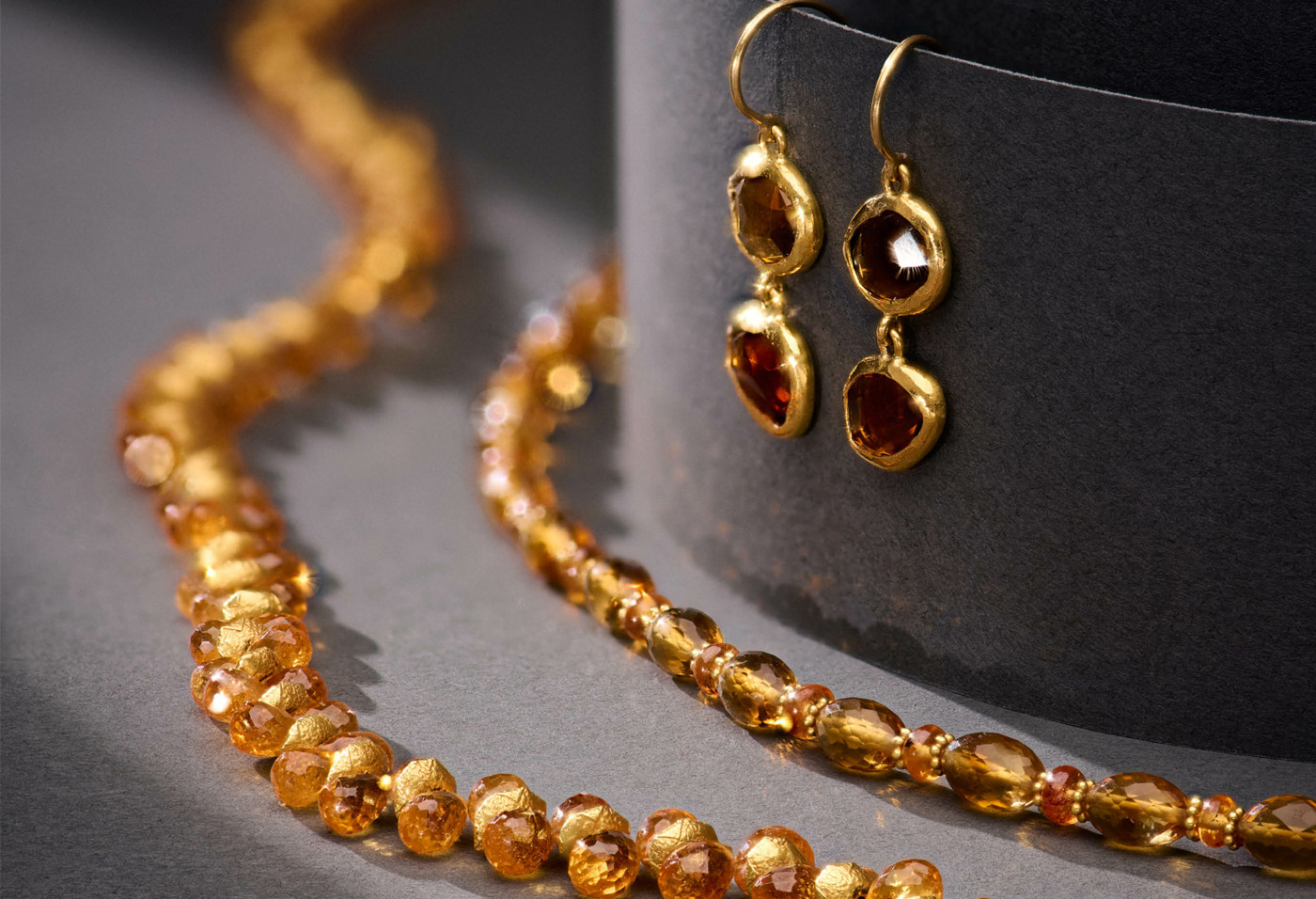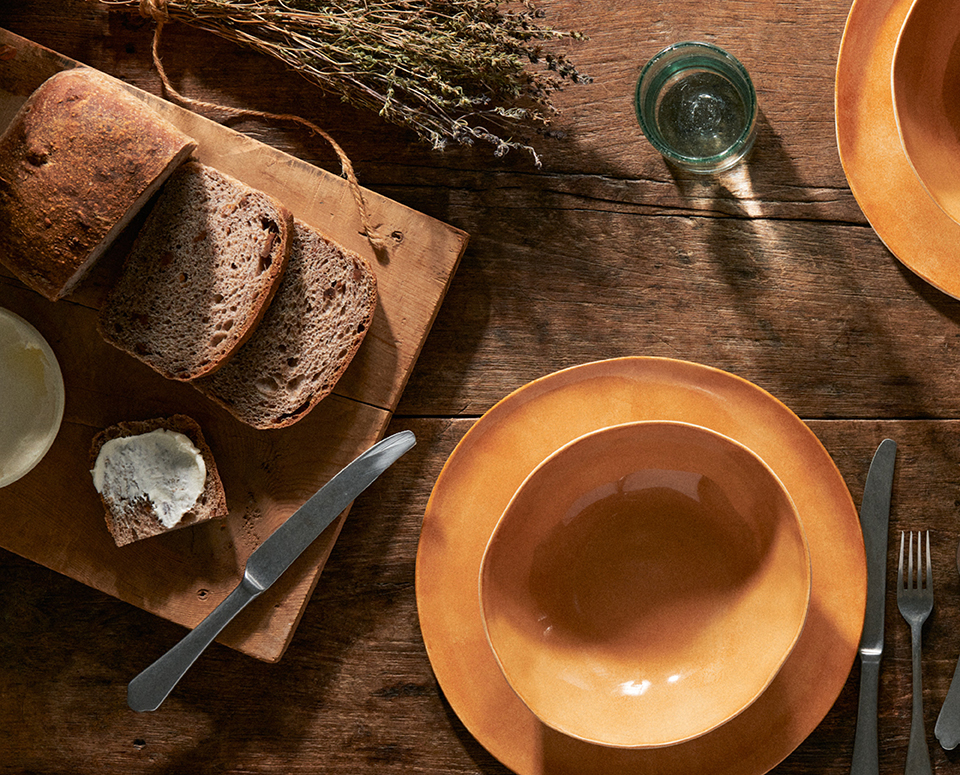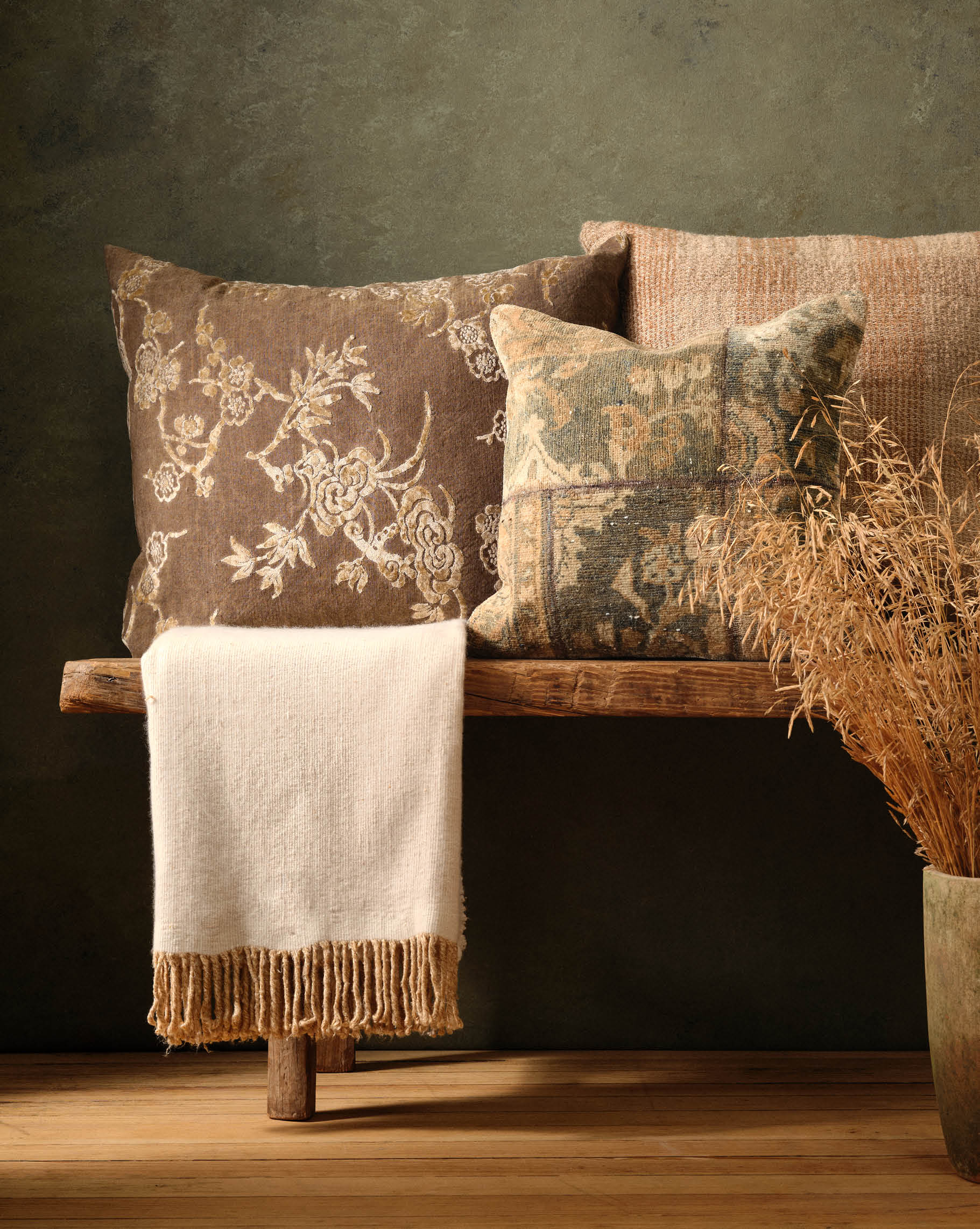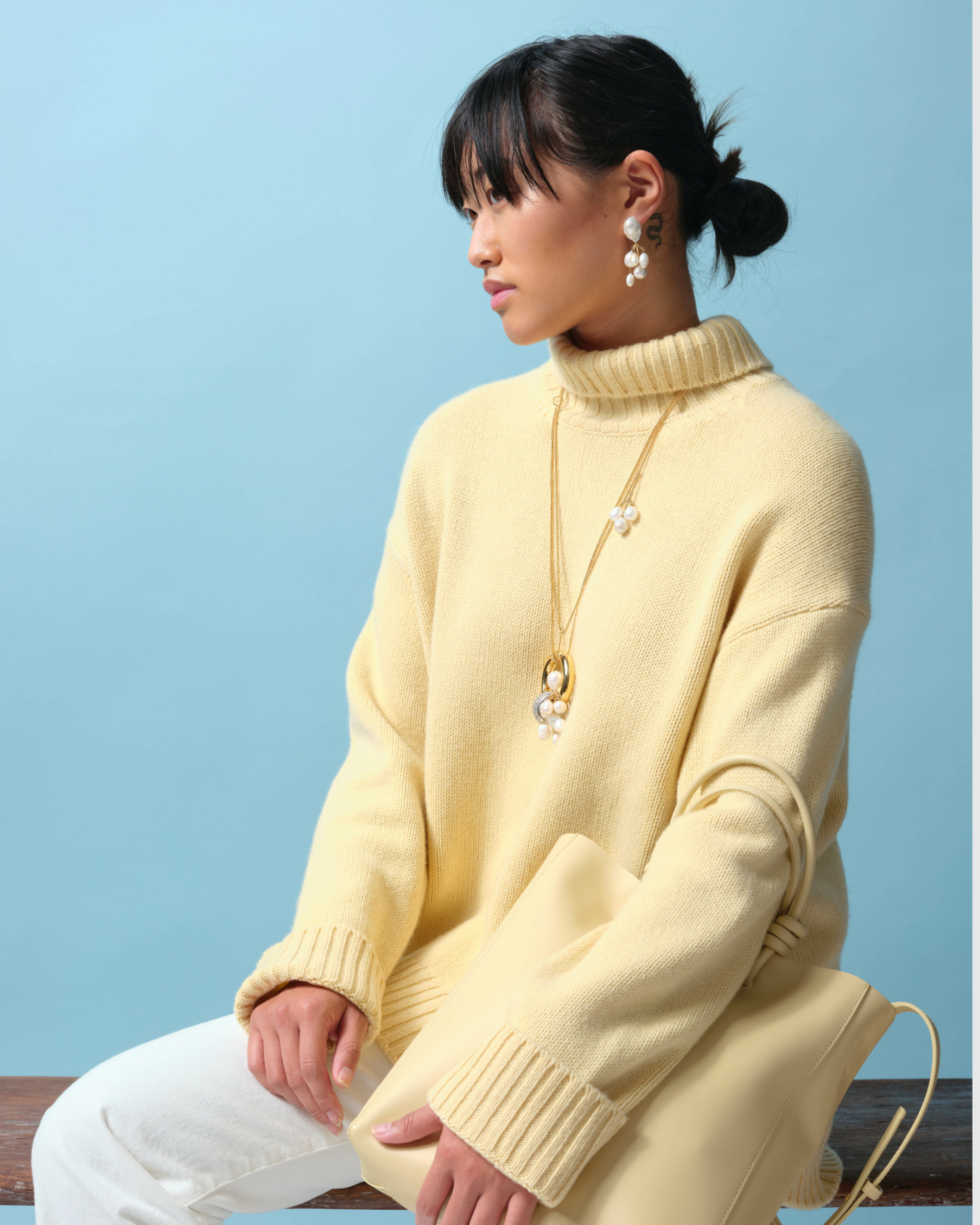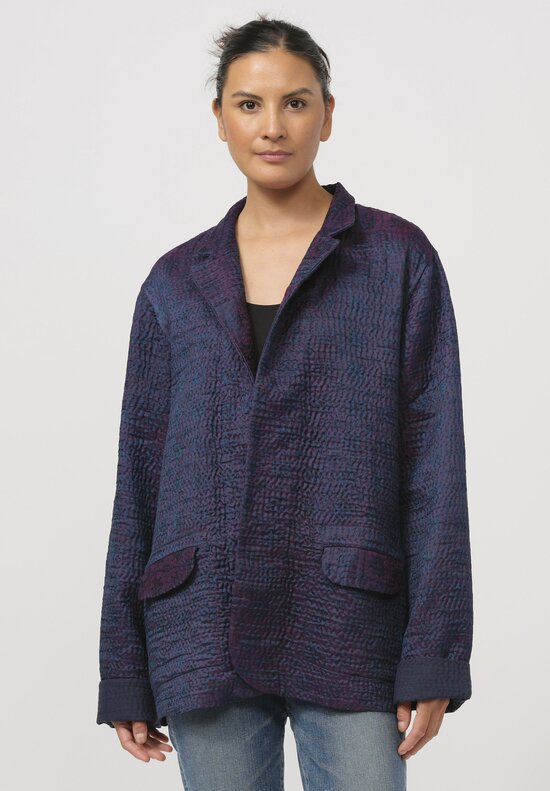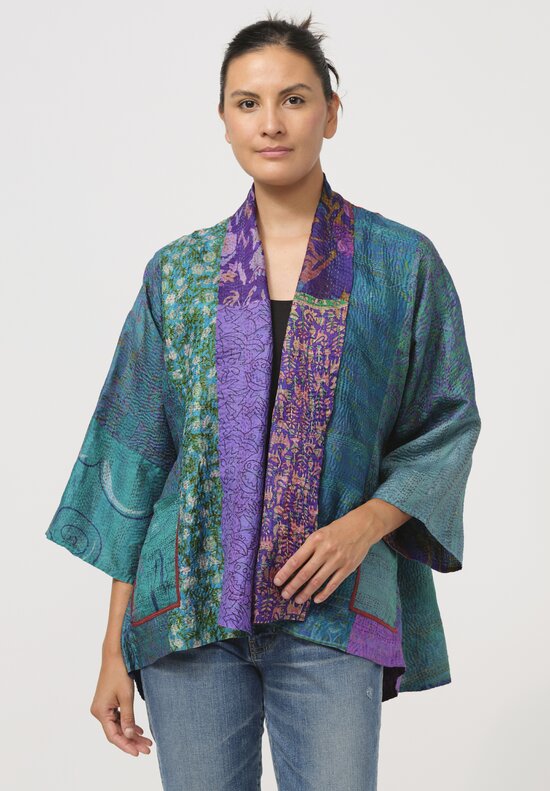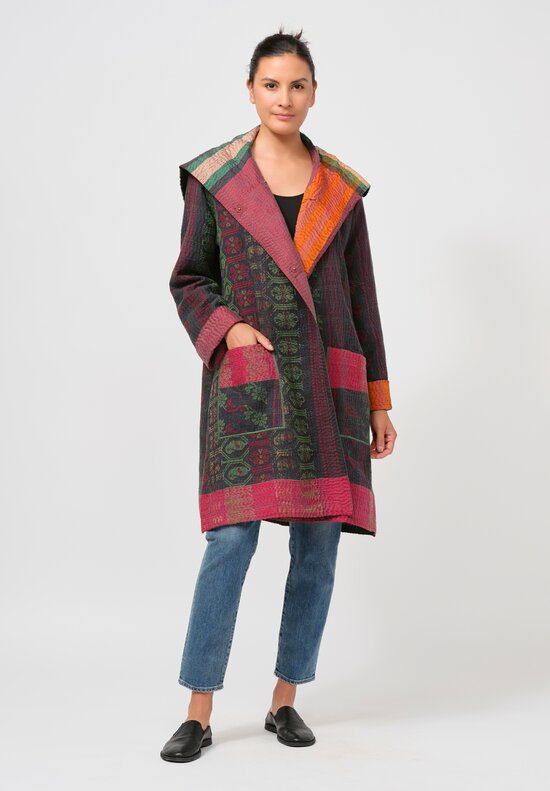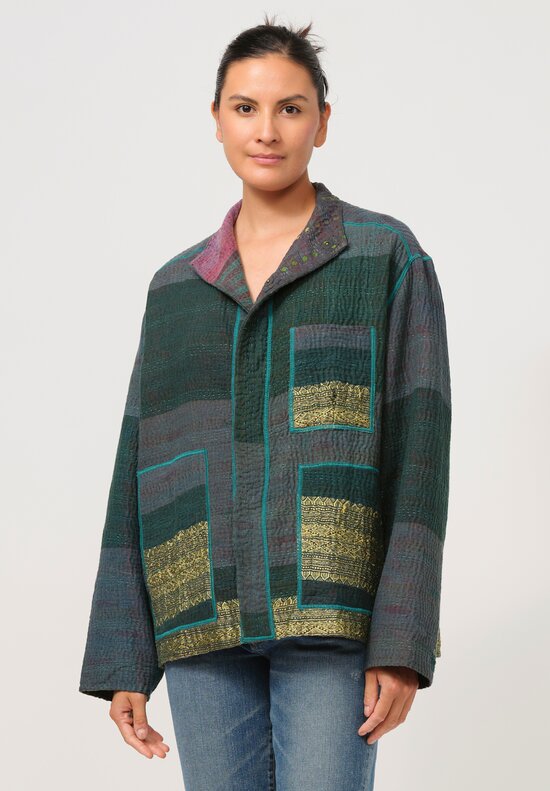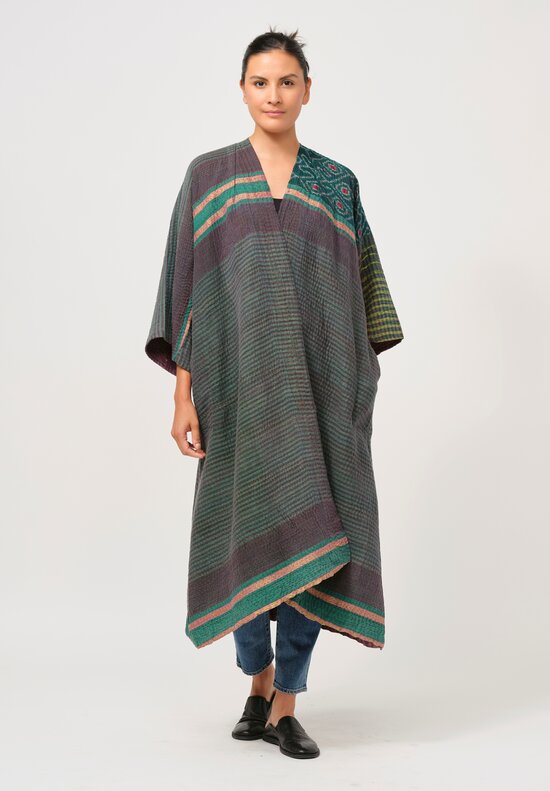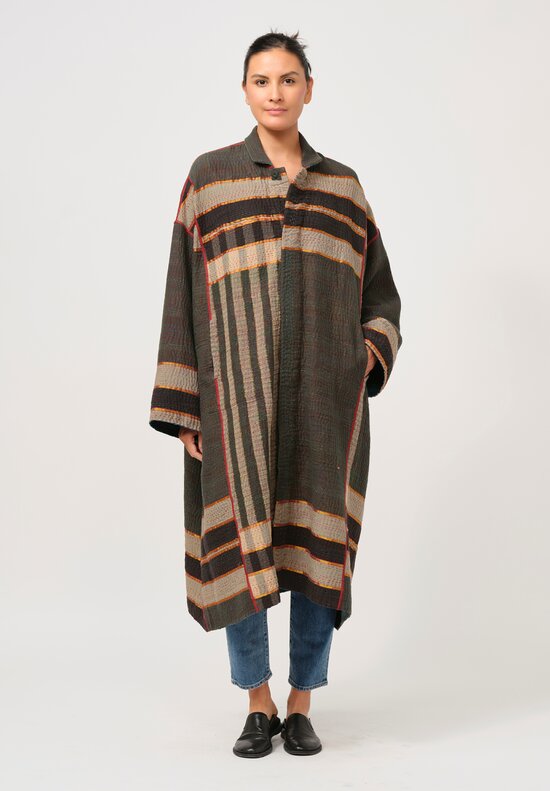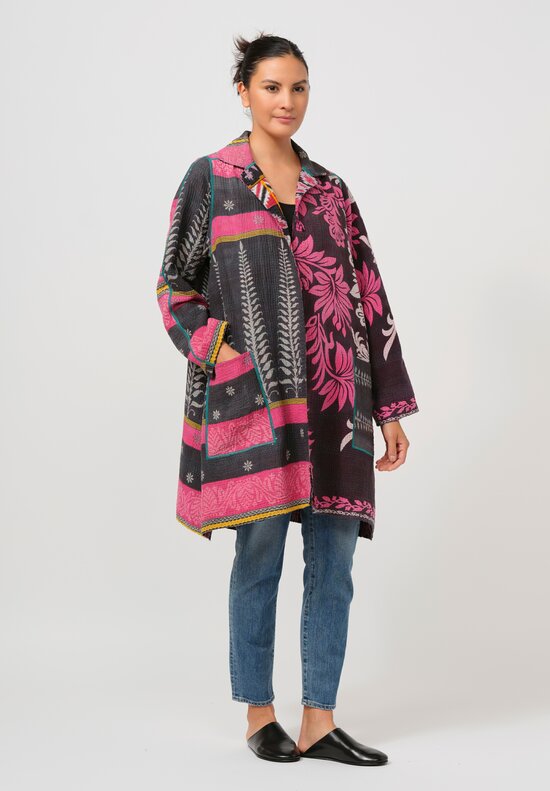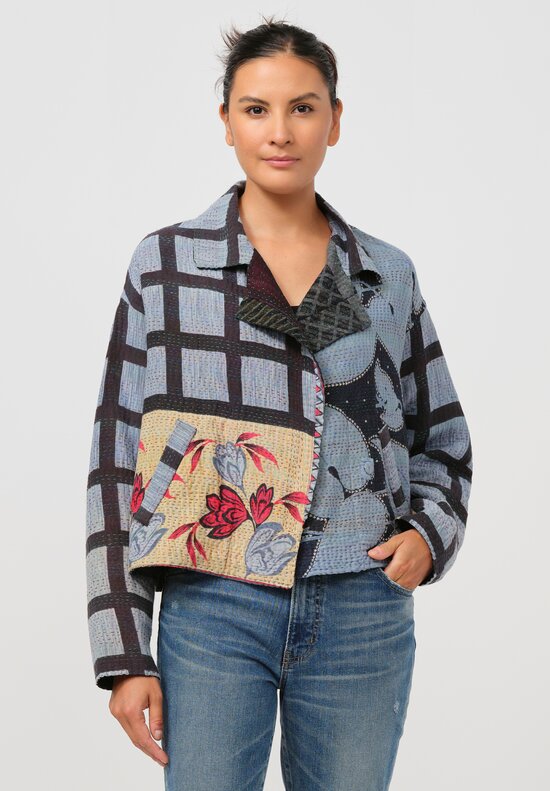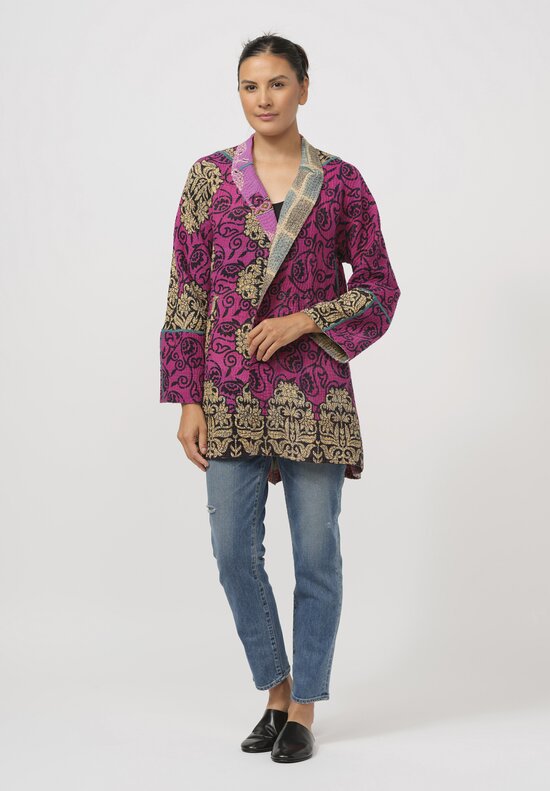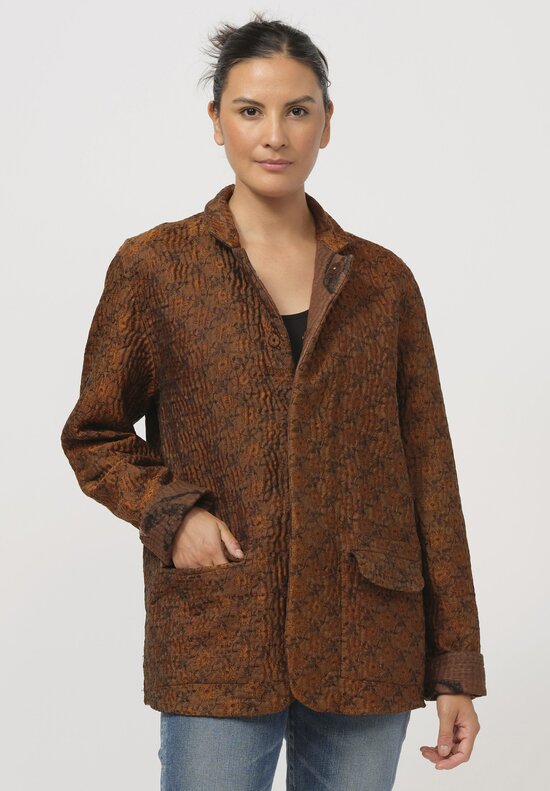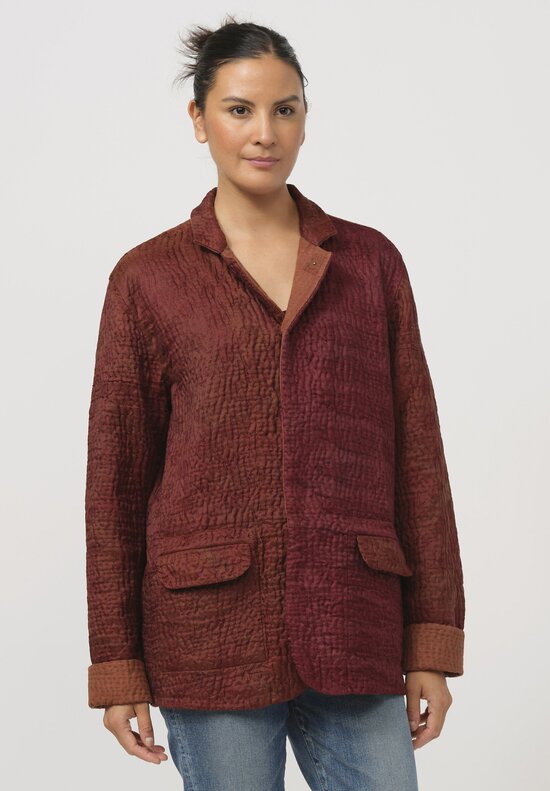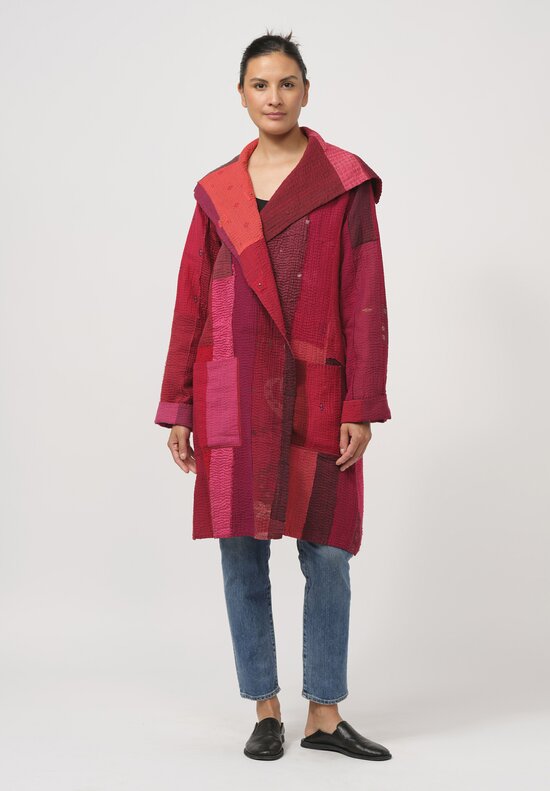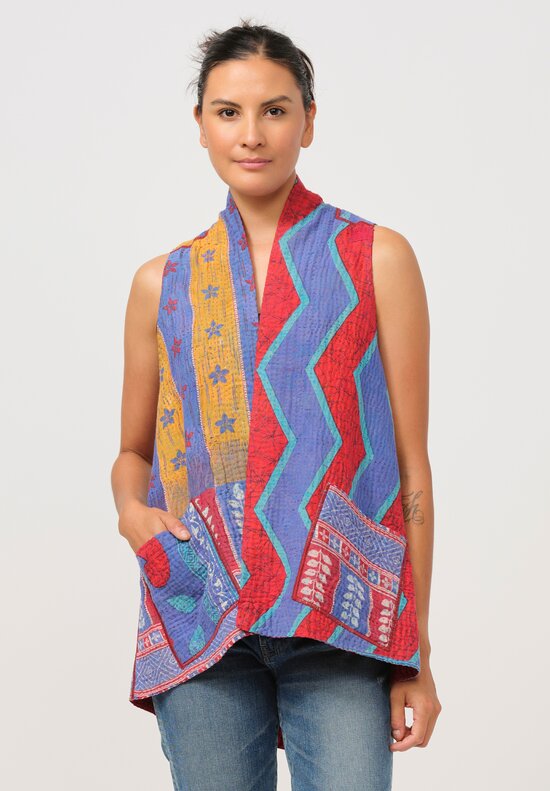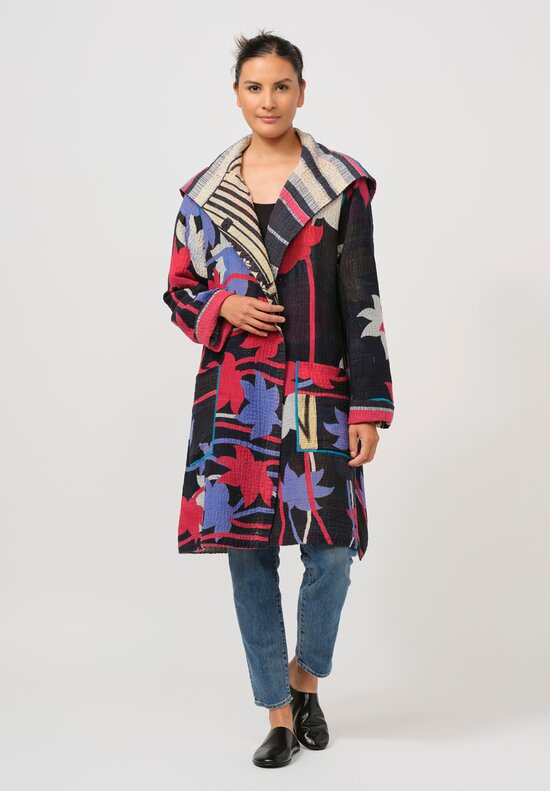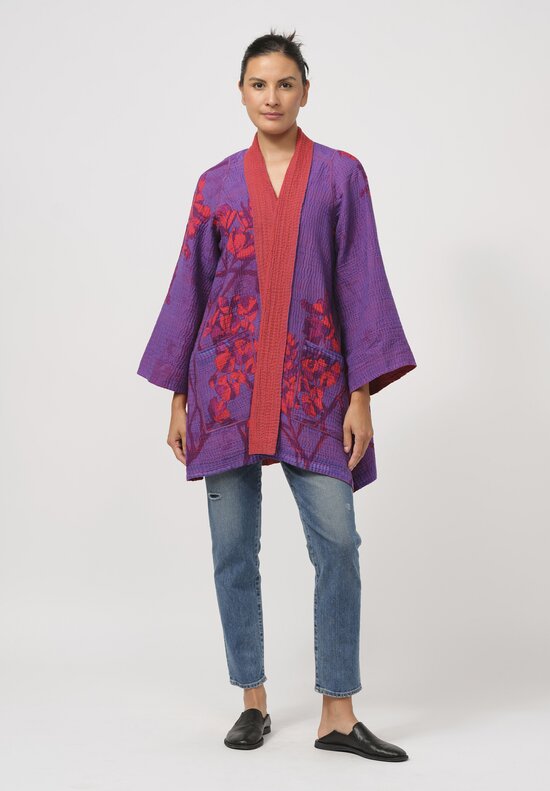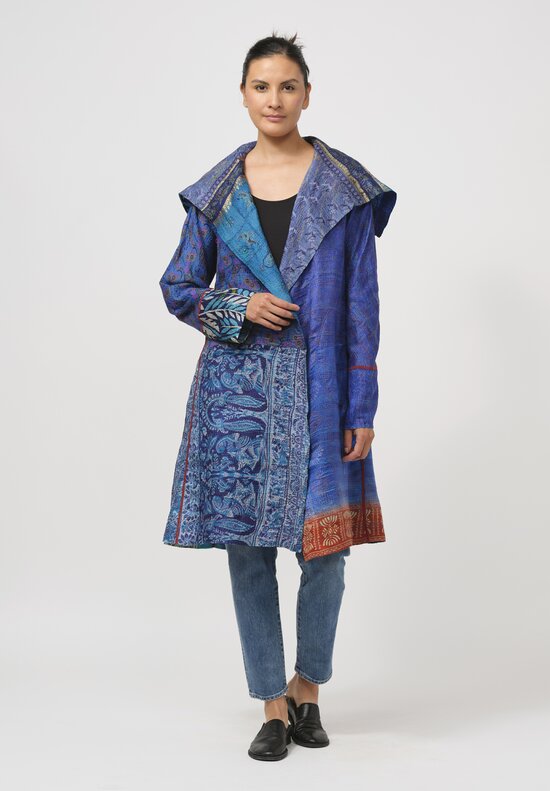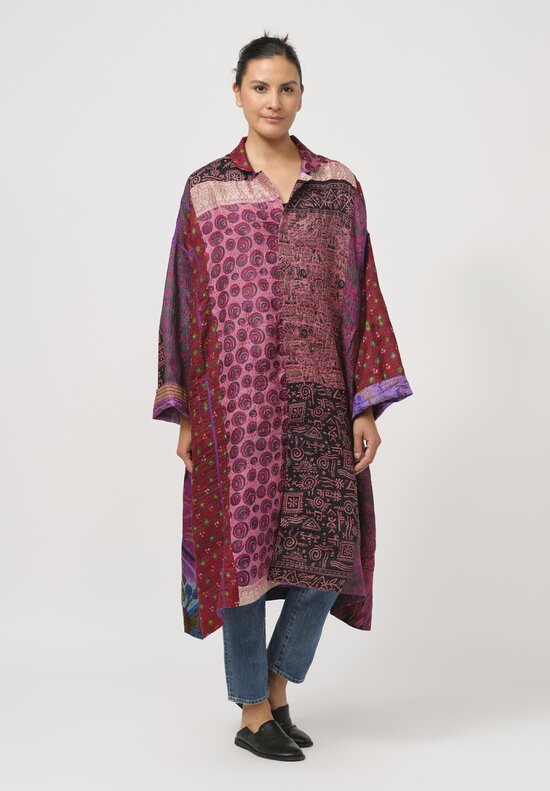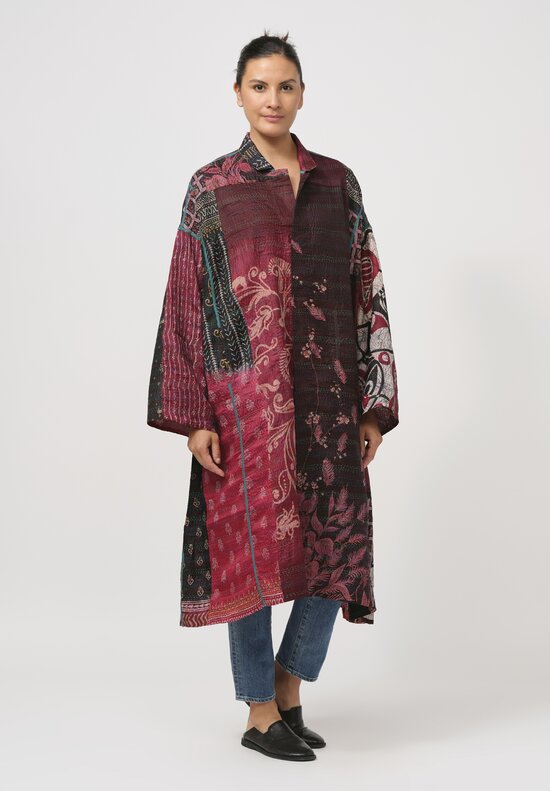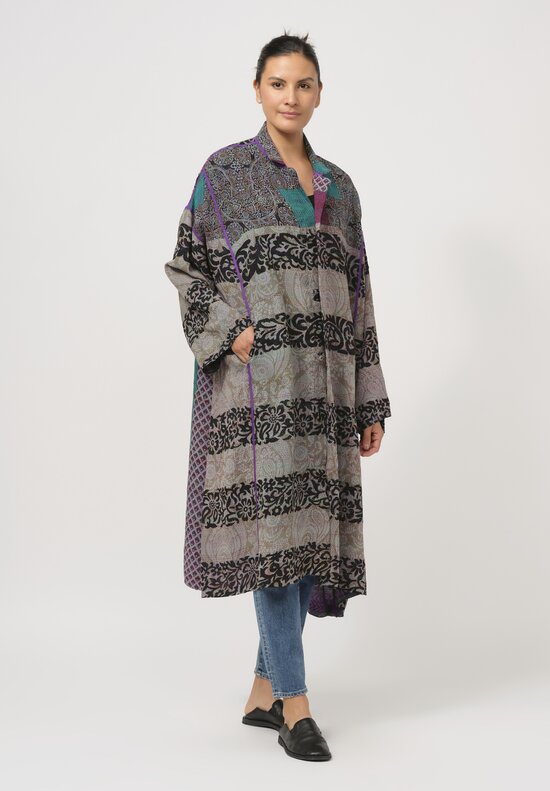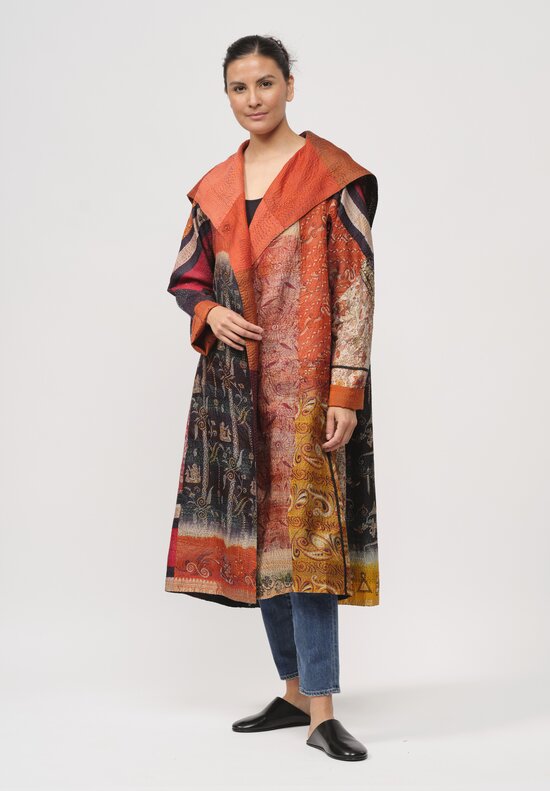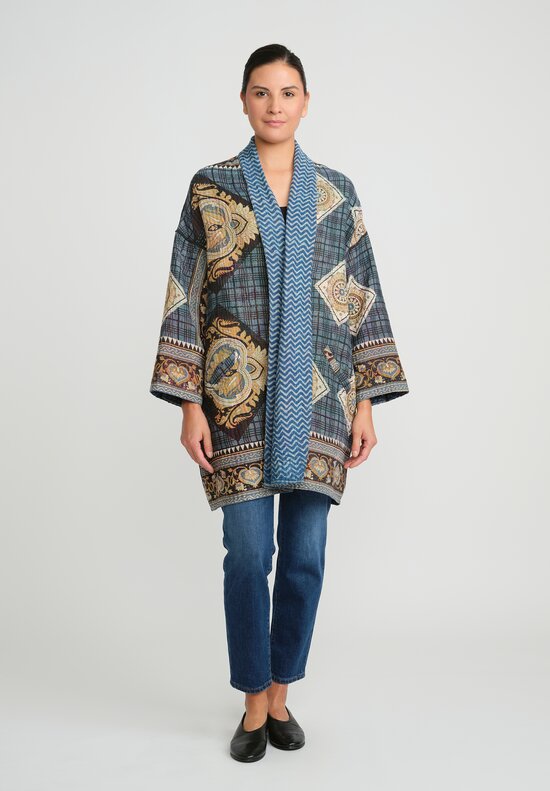Kantha stitching gives life to old textiles and creates work, a community and a voice for women. The creation of these textiles is transformative through folklore and their religious properties as well as physically, by transforming other peoples’ belongings into an item with a continued history. Kanthas are a synthesis of many lives and an intimate reflection of the quilt maker.
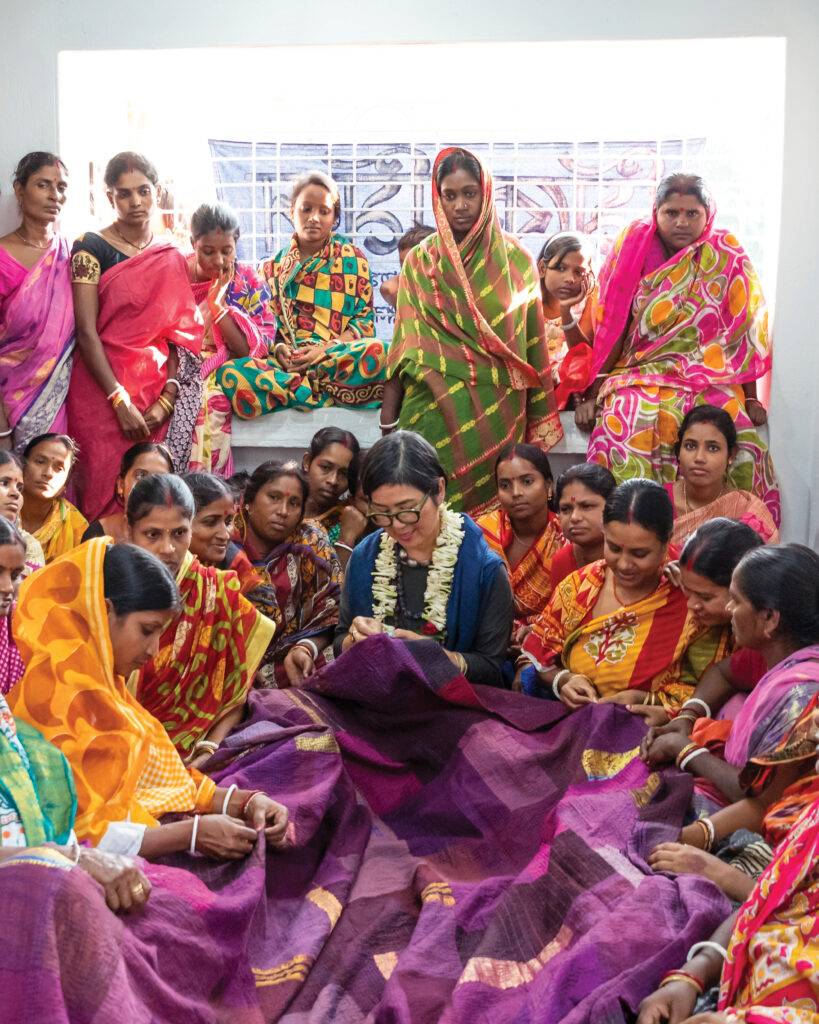
Designer Mieko Mintz combines the rich textile traditions of India with modern Japanese aesthetics to create one-of-a-kind kantha jackets. Mieko’s distinctly unique integration of saris and the Kimono tradition places her clothing into a new realm of international relevance. Because of her dedication to the art, Mieko is planning a foundation for promoting the continuation of kantha culture. Her plans include a museum to present kantha as an art form, not just material used for its commercial value.
Since 2009, Mieko has been traveling to India to select and pair vintage saris. Nearly 7000 pieces are gathered during this process. They are then sorted and combined into approximately 1200 pairs for each side of the garment.
[Mieko] considers herself “match maker” to the Kantha throws. She feels a sense of responsibility to saris, that they never be separate again.
Mieko Mintz

While traditional Kantha uses white stitching, Mieko uses various colors of thread to complement each textile. Kantha stitching for each piece of fabric is done by women in a small cooperative in West Bengal who need up to 5 months to complete their meticulous work.
Some of Mieko’s jackets are made with patchwork panels, which offer endless possibilities in their arrangement. Variation in color, pattern and type of material – as cotton and silk can be layered alongside one another – make each garment unique. Through ‘surface patchwork’ pieces of material are layered over larger sections of saris and Kantha. They also use independent pieces left over from other garments, minimizing any waste.
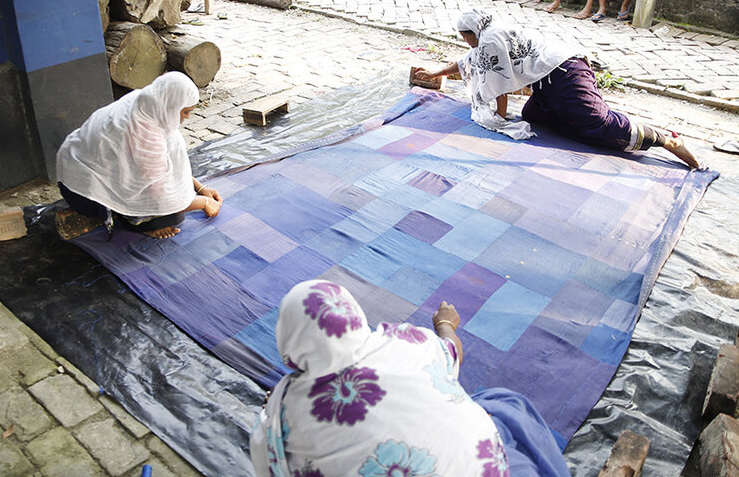
The main seams of each piece are sewn up to six times during construction. Overlocking stitches are used to make garments reversible, and this is a method Mieko came up with through her past experience working as a knit designer. After a single stitch is made along the edges to stabilize the material, the overlocking stitch is then sewn. Both pieces are eventually overlaid, and lines of straight stitch are used to attach them. Although it is a labor-intensive process, the stitches enhance the construction and aesthetics of each garment.
Whether seen as a sophisticated art form rich with symbolism or a utilitarian device with innovative design, kanthas are made with technical expertise. The process of creating with worn-out saris is nothing short of transformative and filled with history. The kantha stitch provides a lifetime’s worth of love and stories that transcend generations.
Read more about the origin of kantha by visiting our previous post – Kantha: A Catalyst for Physical, Emotional & Spiritual Change.
